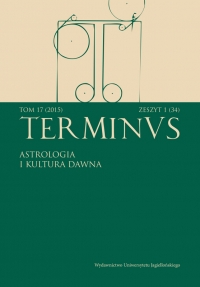Żołnierz łanowy w polskim piśmiennictwie polityczno-wojskowym za panowania Zygmunta III Wazy
A Lands’ Infantry Soldier in the Polish Political-Military Writings during the Rule of Sigismund III Vasa
Author(s): Dariusz KupiszSubject(s): Maps / Cartography, Military history, Political history, 16th Century, 17th Century
Published by: Wydawnictwo Uniwersytetu Jagiellońskiego
Keywords: history of old-Polish military science; lands’ infantry soldier; political-military writings in the 16th and 17th century;
Summary/Abstract: The paper discusses the questions of seeking new ways of defending the Polish-Lithuanian Commonwealth in the close of the 16th century and the first three decades of the 17th century. The author’s objective was to demonstrate the plans of the socalled measuring expedition presented in political-military treatises, writings and journals published during the rule of Sigismund III Vasa (1587–1632). The expedition was supposed to engage infantry or cavalry soldiers appointed in a number proportionate to the acreage of arable land (in the Polish units of łany or włóki), the number of houses, inhabitants of a country, or even the income. The promoters of these concepts presented them as less burdensome for the gentry than the traditional mass mobilization (Pol. pospolite ruszenie), which forced noblemen to embark on a war in person. They were also supposed to be cheaper than the hitherto practiced enlistment funded from taxes paid mainly by the subjects, and more effective, that is ensuring a numerous army able face even the most powerful enemies. They appeared particularly often in the periods of the Turkish threat and rough wars fought with Sweden, but were never carried into effect. There was no such need, since the conflicts were reconciled and during the rule of Władysław IV Vasa long-awaited peace prevailed. In 1648, however, new long-lasting and costly wars broke out.
Journal: TERMINUS
- Issue Year: 19/2017
- Issue No: 3 (44)
- Page Range: 663-689
- Page Count: 27
- Language: Polish

